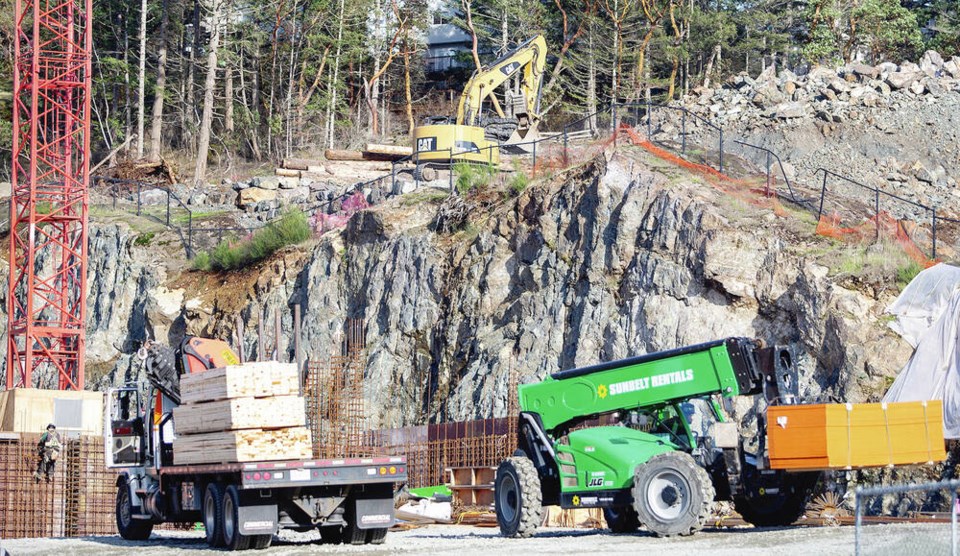Enrolment in the Sooke School District has spiked by another 680 students, bringing this year’s student total to the highest-ever in the district.
Now home to 13,767 students, the district is one of the fastest-growing in the province, with a “remarkable” 40 per cent growth rate over the past 15 years.
For the district, it’s a mixed blessing, says deputy superintendent Paul Block.
“While we are pleased that our schools continue to be a destination of choice for families, the sustained growth pattern presents a real accommodation challenge for us now and in the future,” Block said this week.
In many cases, students can’t get into schools in their catchment areas because they are full, so they have to attend other nearby schools or learn in portables, which cost about $400,000 apiece to purchase and install.
Superintendent Scott Stinson said there are currently 59 portables in the district, an all-time high. “We try and guess where the growth is going to be and where we need to put the portables,” he said.
Sooke School Board chair Amanda Dowhy said that as residential developments across the West Shore continue to expand, it’s “imperative” that they be accompanied by new school infrastructure and expansion funding.
Having to buy and move portables puts “extreme pressure” on the district’s operating budget, Dowhy said. “The more operational dollars spent on portables, the less we are able to spend on students.”
In nine heavily populated elementary schools, much of the multi-purpose space normally used for activities like music, art and drama has had to be converted to classroom space — a step the district called “a last resort.”
Melissa Da Silva, acting president of the Sooke Parents’ Education Advisory Council, said it’s a concern for parents.
“We know that the district is doing the best that they can with the space that they have, but it’s a huge challenge for all of us, because as parents we want to see our kids benefiting from these types of programs.”
She said students still have access to music and art education, but it’s happening without dedicated rooms. “It’s sometimes not as functional as it could be,” she said. “They can’t do as much.”
The district has also seen an increase in demand for online learning and inclusive education, which supports students with specific needs with individual-education plans and case managers. Inclusive-education numbers jumped to 4,378 in 2023-24 from 3,824 in 2022-23, an increase of 14 per cent, resulting in staffing challenges, Stinson said.
The district has struggled in recent years to accommodate rising student numbers, despite 2,660 student spaces created in the past five years with $260 million in provincial funding.
Recently completed projects include PEXSISEN Elementary and Centre Mountain Lellum Middle School in Langford, while SĆIȺNEW̱ SṮEȽIṮḴEȽ (pronounced “schee-ay-nuh-ska-leetk-luth”) Elementary is currently under construction, also in Langford.
SĆIȺNEW̱ SṮEȽIṮḴEȽ Elementary is expected to be at or near its 480-student capacity when it opens in 2025.
The top priority in the district’s capital plan is an elementary school on Flint Avenue in north Langford, followed by a secondary school in north Langford near Costco, an elementary school in south Colwood’s Royal Bay area and an elementary school near Sooke’s Sunriver Estates.
Land has already been acquired for all four schools, Stinson said.
Last week, the Ministry of Education announced $24 million in funding for a total of 10 prefabricated classrooms to accommodate 380 students at Ruth King and David Cameron elementaries by next September. It was the first funding announced as part of a provincial pilot project using prefabricated classrooms, which can be completed in half the time of a traditional build.
“While these additions provide a welcome respite in our immediate space challenges, the continued heavy residential growth in newer neighbourhoods throughout Langford and Colwood, with no end in sight, means we still need new schools,” Dowhy said.
The district is projecting that the student population will exceed 16,000 by 2030, based on consultation with municipalities and a review of housing trends and other data.
>>> To comment on this article, write a letter to the editor: [email protected]



